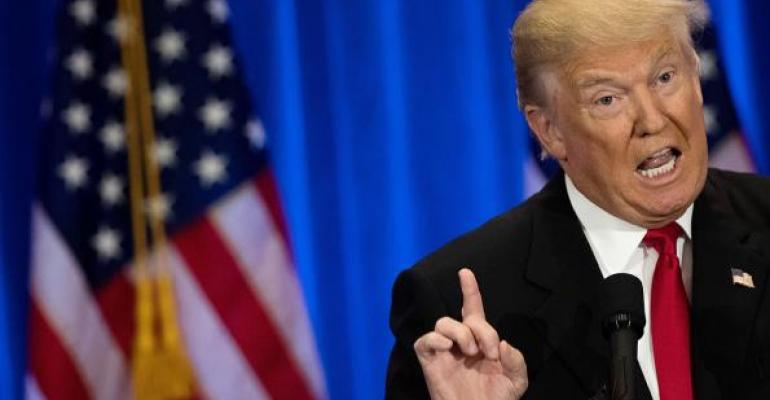by Luke Kawa
(Bloomberg) --Slow growth, falling corporate profits, an imminent deflationary spiral, and the flat yield curves that play havoc with financial intermediation; all these longstanding investor concerns now seem like ancient relics of a simpler time before last week, when Donald Trump came along and turned these tenets on their head.
That's the takeaway from the 177 fund managers Bank of America surveyed from Nov. 9th to the 14th, who together manage $456 billion, and who say they're putting cash to work this month at the fastest pace since August 2009.
The U.S. election result is "seen as unambiguously positive for nominal GDP," writes Bank of America Merrill Lynch Chief Investment Strategist Michael Hartnett, in a note accompanying the monthly survey.
Expectations for the yield curve to steepen — in other words, for the gap between short and long-term rates to widen — saw their biggest monthly jump on record and reached levels not seen since the throes of the taper tantrum in 2013.
Sure enough, expectations of curve steepening have coincided with massive inflows into the Financial Select Sector exchange-traded fund from investors hoping to ride these newly favorable conditions for banks.
Global growth and inflation expectations are also tracking the ascent of Trump. The net share of fund managers expecting a stronger economy nearly doubled from last month's reading, while those surveyed are the most bullish on the prospect of a pick-up in inflation since June 2004.
Investors are now also more optimistic about profit growth than they have been in 15 months.
The relative performance since the election of cyclical stocks relative to their defensive counterparts (which have done well in the low-yield, slow-growth environment of the past few years), is perhaps the best testament to investors' new faith in the reflation trade.
For the week ending Nov. 11, the Industrial Select Sector ETF (XLI) outperformed the Utilities Select Sector ETF (XLU) by the most on record.
"There will likely be a trade in 'bond proxies' soon but our cyclical view of peak liquidity, globalization, inequality means the 'yield' dam has been broken," adds Hartnett.
While a record net-56 percent of fund managers expressed the view that fiscal policy was too restrictive, that's something that Trump says he plans to fix, fast, through a combination of tax cuts and infrastructure spending.
But last week's resounding victory for the extravagantly-coiffed real-estate mogul doesn't mean fear has wholly vanished; it's merely migrated to different corners of the market. Expectations of stagflation in the global economy over the next year (a mix of sub-par growth, and above-trend inflation) approached a four-year high, while a stagflationary bond crash is now viewed as the biggest tail risk to financial markets.
Among the fund managers surveyed, an "overwhelming 84 percent think protectionism is [a] risk to financial market stability," concludes Hartnett, with the share citing it as the chief threat rising to levels not seen since 2009.
To contact the author of this story: Luke Kawa in New York at [email protected] To contact the editor responsible for this story: Isobel Finkel at [email protected] Joe Weisenthal





